The
Rap on Wraps
A Prescription Eyewear Challenge
Many
Patients want wrap-around prescription
eyewear.
But many Optical Retailers are unaware of the challenges.
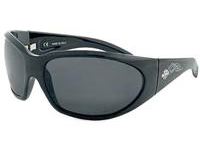
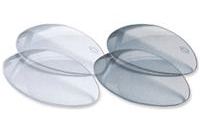
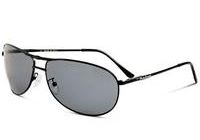
"It is how well the eyewear makes contact with the Patient that ultimately
defines Ophthalmic Dispensing, whether it be spectacles or contact
lenses."
Wrap
Effects and Optimization
From an article appearing in the April,
2005 issue of 20/20 Magazine.

The
curvature and wrap (face-form tilt) that makes a lens so functional
in terms of lens coverage also requires care in setting up the
Rx. Compared to a standard "flat" lens in the same
Rx, a wrap lens changes the base curve and tilts the lens in
the vertical plane. These changes will affect the wearer's vision,
NOT usually for the better, unless the optics are optimized
for the effects of wrap. Fortunately, the optimization is well
understood.
TILT (WRAP) OPTIMIZATION
The
primary optical effect of wrapping a powered Rx lens is an offset
in the prism and power of the lens as perceived by the wearer.
The fact that the wearer looks through a lens differently when
it is wrapped is key. To consider it another way, if you take
an ordinary "flat" lens of a certain Rx power and
introduce wrap (face-form tilt), the lens will still read the
original Rx only when measured along the original OC and visual
axis of the lens. However, in the new wrap configuration the
wearer is now looking through the lens on a different optical
axis corresponding to the wrapped positioning.
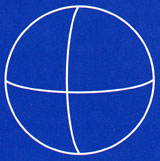

The resulting prism and blur can be objectionable, especially
in higher powers. Even a plano lens introduces prism when wrapped,
causing discomfort for the wearer; this is why so many ophthalmic
manufacturers of better sunwear provide decentered (i.e. prism
corrected) lenses in their plano, i.e., non-prescription, sports eyewear. In an Rx lens,
the lens power makes those effects even stronger.
Fortunately, the corrections required to optimize the wrap are
fairly straightforward and formulas can be found in many ophthalmic
optical texts. The calculation takes into account the Rx power
and the wrap dimensions of the frame and the resulting optimization
usually adds some base-in prism at the eye point and small adjustments
of power, cylinder and axis compared to the original "flat"
Rx. These adjustments are ground into the Rx during surfacing.
For example, to create a -4.00D sphere for the wearer to satisfy
a -4.00D sphere Rx, the lab would need to supply a -3.75 -0.25
x 180 with 0.5D Base In.
LAB PROCESSING
How
these calculations are applied depends on who is doing it. In
fact, many labs still fill a wrap Rx as if it were a conventional
flat frame, grinding the "dumb" Rx onto an eight-base
lens and mounting it in the frame without regard to the wrap
angle or optical correction. The resulting optics is bound to
disappoint your patient.
Labs that understand the need for wrap optimization, however,
have procedures for making the required adjustments. For example,
two labs have proprietary labs for processing wrap prescriptions.
Oakley has a proprietary formula to calculate surfacing optimization
in Rx lenses comparable to the companies XYZ optical technology.
The AO-SOLA SOLA Technologies lab uses special software to calculate
surfacing optimization, plus the lab offers a "Spazio"
specialty wrap lens design with additional atoric optimization
of the front surface for improved peripheral optics.
Specialty labs also may have other tools and tricks for delivering
wrap eyewear, such as
surfacing processes that are optimized for the steep back curves
and large apertures of a wrap Rx and edging and tracing solutions
that can handle the sinuous frame grooves. These labs can also
assist with selecting which wrap frames are most suitable for
Rx.
Some manufacturers such as Oakley and Maui Jim have built their
own dedicated labs to service their own products with factory-direct
Rx processing and OEM lens colors. Other brands such as Nike,
Bolle and Serengeti have partnered with specific labs to provide
factory-approved optics and processes specifically tailored
for their wrap frames.
All
this doesn't mean that a wrap Rx can't be filled in your own
office. The formulas and technology are out there and a specialty
wrap Rx service could be an attractive niche for your practice.
Talk to your lab to understand their capability, and then decide
for yourself.
Add prism to wrap Rxs to adjust for the "tilted" visual
axis. A rule of thumb is:
 For Rxs less
than ±2.50D in the horizontal meridian, order lenses
with 0.25D Base In.
For Rxs less
than ±2.50D in the horizontal meridian, order lenses
with 0.25D Base In.
 For Rxs less
than >2.50D in the horizontal meridian, order lenses with
0.50D Base In.
For Rxs less
than >2.50D in the horizontal meridian, order lenses with
0.50D Base In.
ORDERING WRAP LENSES
If it is decided to outsource wrap jobs to a lab, there are
a few steps to follow. First, talk to your lab about their capability
and procedures and make sure you understand the product you
are getting. Also ask if the lab has a list of frames that they
consider Rx capable (and not capable) to assist in the frame
selection process. Finally, discuss their Rx range limitations
and turnaround time capability.
When ready to place an order, generally the process should be
quite straightforward.
For example, with Oakley, call or fax the order, the job is
started immediately and the frame is supplied from the manufacturer's
inventory; for SOLA Technologies select the "Spazio"
wrap product on the order form and send in the frame and regular
Rx script. The lab does the rest. Do not bother working out
the wrap corrections because the lab will do that and it could
be confusing if you try to second-guess their calculation by
sending pre-corrected Rx figures.
MEASURING WRAPS -- SURFACED VERSUS "AS-WORN" MEASUREMENTS

When
the job comes in and it is time to check the Rx accuracy, remember
the wrap-corrected Rx differs from the original Rx. If the lens
is simply clamped into your lens meter, the value will be the
"corrected" power that was surfaced into the lens.
Oakley, SOLA and other labs will supply a checking ticket that
lists this corrected value so you know that your measurement
matches their "adjusted Rx."
Alternatively, try measuring the eyewear in the "as-worn"
position--that is, get your lens meter to look through the lens
along the same visual axis that the wearer will experience,
which then should report the exact power called for in the original
Rx refraction. The feasibility of "as-worn" measurements
depends on the configuration of your lens meter; manually position
the frame over the read head and eyeball its position to get
the right alignment. It may help to open the temples and use
them as a guide; align the temples so they are parallel to the
optical axis of the lensometer and then read the Rx along the
same optical axis.
Conventional
coordinates of an optical system
X-axis the horizontal, the Y-axis the vertical
and the Z-axis the optical axis of the system.
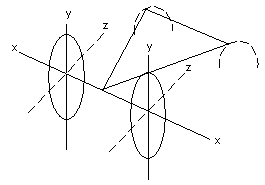
Frame
Tilt
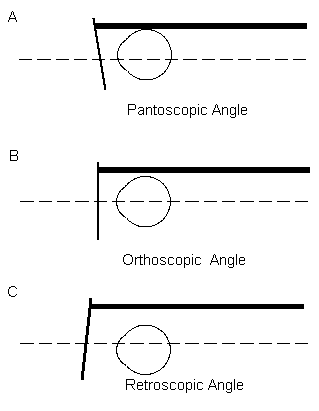
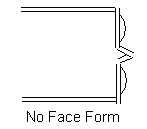
BASE CURVE CONSIDERATIONS
As with any base curve change in Rx eyewear, it is important
to consider the effects of eight-base curves on patients. The
8D base curve is selected for wrap coverage and to equal the
curve of the frame, not optics. Wearers may perceive a change
in magnification compared to their regular specs, especially
in higher minus powers where their regular lenses may be a two-
or four-base. Increased vertex distance and front base curves
will increase magnification of the patient's world. These changes
may also be more significant if the new sunwear does not have
wrap-optimized optics. Make sure to explain the differences
to patient and inform them there may be a short adaptation period
required. Most patients love the fact that they are free from
having to wear ordinary flat or uncorrected sunglasses outdoors.


RX RANGE
Generally, wrap lenses are recommended for a narrower Rx range
than conventional frames, from perhaps +200D to -600D depending
on the manufacturer. There are several good reasons for this.
For example, high minus Rxs can be very thick in the larger
eye sizes typical of wraps; wrap prism and magnification errors
are more pronounced in stronger Rxs; and higher minus Rxs can
result in steep back curves that are difficult to surface. Discuss
Rx ranges with your lab and consider steering higher Rx patients
to other products (for example, contact lenses combined with
regular plano wraps).
MULTIFOCAL LENSES
For the most part vendors have offered Rx wraps in single-vision
lenses only, leaving out many wearers such as the presbyopic
golfer who wants to read her scorecard as well as her lie. In
expert hands, however, a variety of multifocal solutions can
be delivered in wrap frames. The same wrap corrections used
with spherical single-vision lenses can also be applied to spherical
flat-top or round-seg lenses.
Progressives are tougher since most PAL designs are optimized
for specific Rx ranges, which in eight-base designs means high-plus
powers only; therefore the design may not perform as well when
ground to a more typical emmetropic or myopic correction. Alternative
solutions are softer design or spherical design progressives
like AO b'Active, Varilux Panamic or Younger Image where wrap
optimized surfacing with a wide-periphery PAL design can provide
an effective wrap PAL solution. Talk to your lab about their
capability.
GETTING INTO THE DETAILS:
FRAME SELECTION AND FITTING ADJUSTABILITY
With many wraps, fitting is either a "does" or "doesn't"
proposition. A large proportion of wrap sunglasses are injection-molded
plastic with limited adjustability. The shape of the patient's
head and nose are often the primary factors in fit. However,
fit-friendly features do exist:
 Some models
feature adjustable nosepads and/or temples for example, Rudy
Project.
Some models
feature adjustable nosepads and/or temples for example, Rudy
Project.
 Many wraps
are engineered with compliant parts that form to a wearer's
face, for example, ribbed rubber nosepads and flexible temples.
Many wraps
are engineered with compliant parts that form to a wearer's
face, for example, ribbed rubber nosepads and flexible temples.
 Certain brands
offer two sizes in popular styles to help find the best fit.
Certain brands
offer two sizes in popular styles to help find the best fit.
 Most metal-frame
wraps are made with the same components as regular ophthalmic
frames and thus are easily adjusted.
Most metal-frame
wraps are made with the same components as regular ophthalmic
frames and thus are easily adjusted.
Overall, the process of finding the best fit is still going
to be trial-and-error and over time the models that work well
for customers' facial features will be learned.
SELECTING AND FITTING WRAP FRAMES

With limited adjustability, fitting needs to be optimized on
the first visit before the Rx is ordered. Have a patient try
on several styles and check the fit. To get the best sport performance
consider the following factors:
 Nose: Requires
comfort and grip. The nose and temples must securely hold the
frame in place during active sports despite shocks and sweat.
The wearer can't take the time to push the eyewear back in place
while stretching for a point. Extreme conditions will also expose
the comfort limitations of a frame.
Nose: Requires
comfort and grip. The nose and temples must securely hold the
frame in place during active sports despite shocks and sweat.
The wearer can't take the time to push the eyewear back in place
while stretching for a point. Extreme conditions will also expose
the comfort limitations of a frame.
 Temples:
Ensure secure fit and comfort. Flexible, conforming temples
may fit perfectly for one customer yet create uncomfortable
"hot spots" for another. Ask whether the customer
will be wearing the glasses with a hat or helmet as this will
affect the fit.
Temples:
Ensure secure fit and comfort. Flexible, conforming temples
may fit perfectly for one customer yet create uncomfortable
"hot spots" for another. Ask whether the customer
will be wearing the glasses with a hat or helmet as this will
affect the fit.
 Lash crash:
Many wraps fit very close to the wearer's face and their eyelashes
could contact the wrap lens. Keep in mind the Rx solution that
will be employed; most lens-in-frame styles place the front
surface flush with the frame front, bringing the back surface
closer to the lashes. Clip-on styles add an additional lens
element between the sunlens and the eye, further reducing the
available space. In many cases the shape of the person's nose
will determine whether a particular frame will fit or not. Keep
an Rx lens or an Rx clip on hand to try on with the frame.
Lash crash:
Many wraps fit very close to the wearer's face and their eyelashes
could contact the wrap lens. Keep in mind the Rx solution that
will be employed; most lens-in-frame styles place the front
surface flush with the frame front, bringing the back surface
closer to the lashes. Clip-on styles add an additional lens
element between the sunlens and the eye, further reducing the
available space. In many cases the shape of the person's nose
will determine whether a particular frame will fit or not. Keep
an Rx lens or an Rx clip on hand to try on with the frame.
 Vertex distance:
In stronger prescriptions, a large change in vertex distance
compared to the patient's optical frame could affect the power
and magnification experienced in the new wrap pair. Measuring
vertex is difficult with wraps, but try to select a frame that
keeps the lens about the same distance as the optical frame.
--
Vertex distance:
In stronger prescriptions, a large change in vertex distance
compared to the patient's optical frame could affect the power
and magnification experienced in the new wrap pair. Measuring
vertex is difficult with wraps, but try to select a frame that
keeps the lens about the same distance as the optical frame.
--
By The Way
There is increasing diversity among optometry school graduating classes - not just based on gender. This chart shows the percentage of graduates by ethnicity, compared to the census bureau numbers showing population by demographic.
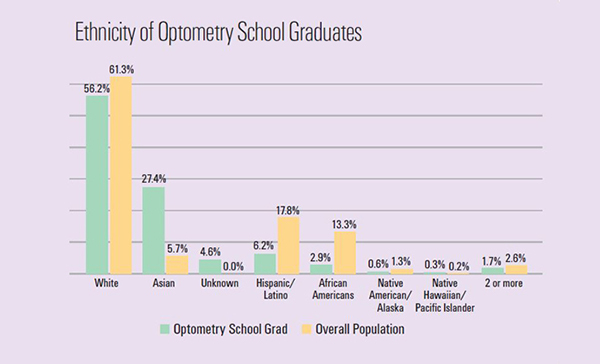
Patients are going to choose the provider who (or that) suits their needs. They will make their choices based on convenience, access, affordability, the languages spoken, personality of the receptionist or optician, frame selection, the coffee bar or any number of factors. -- Source.
NowYouKnowThatYouKnow.com
